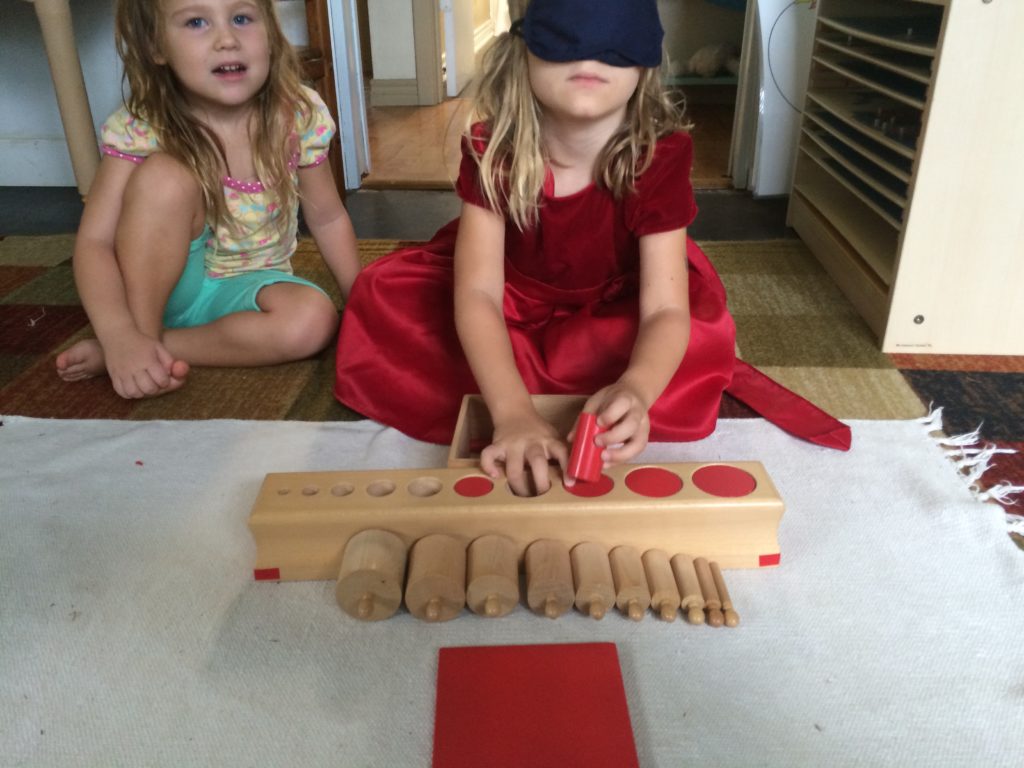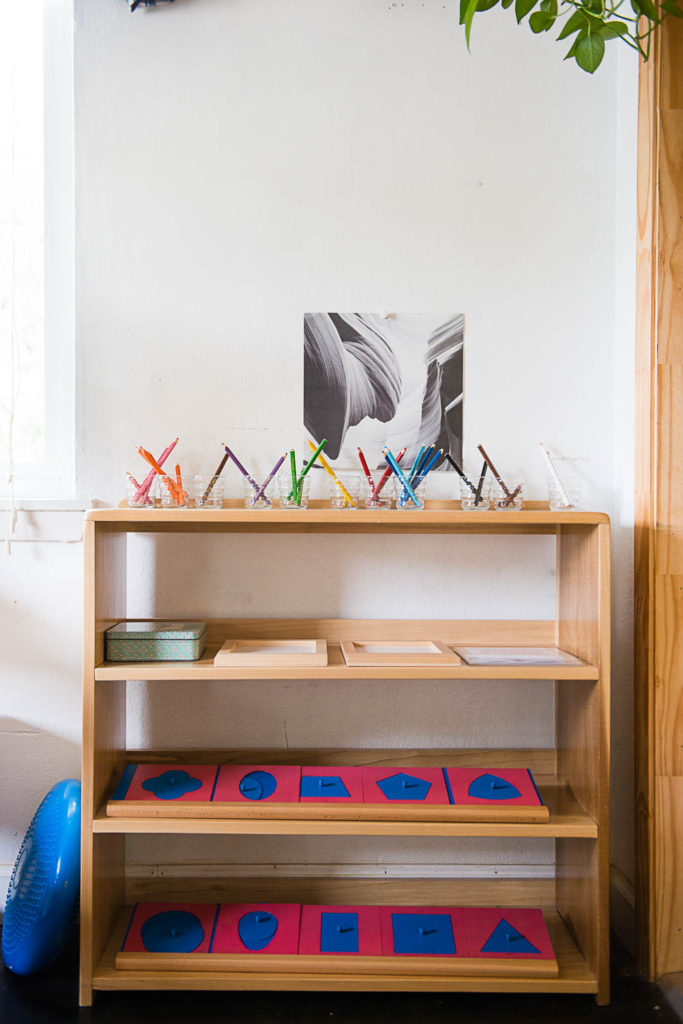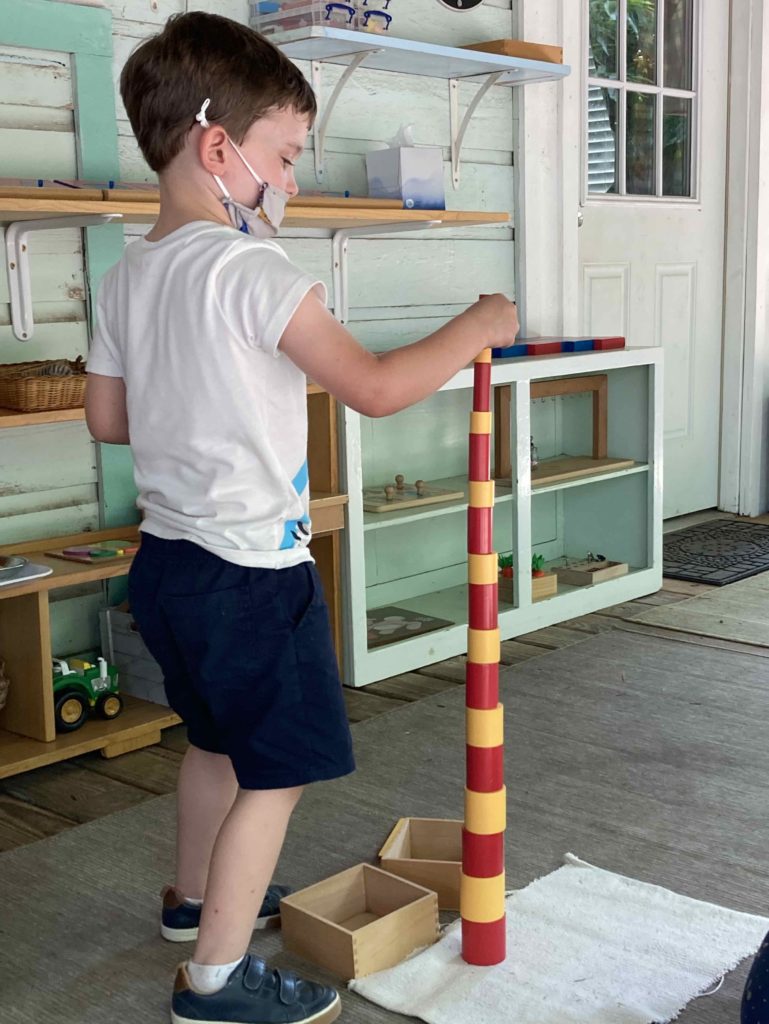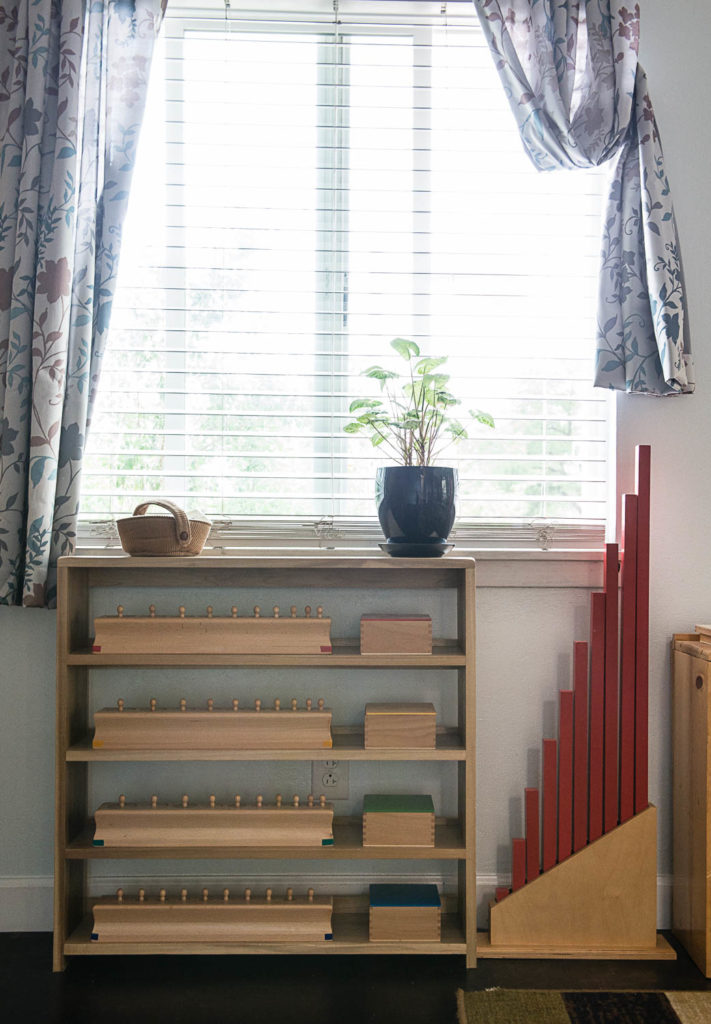
Often literally in the middle of a Montessori Classroom, our Sensorial shelves include many of the materials that Montessori is best known for: the pink tower, the brown stairs, the knobbed and knobless cylinders and the varieties of insets. Maria Montessori herself designed most of these works, based on her own experiences of how young children learn.
If you’ve ever seen a two-year-old work her way around a room and pick up nearly every item within reach, then you know the appeal of these colorful, bulky materials to the young child. These are items that are attractive for the child to look at, that they can pick up and manipulate–and learn.
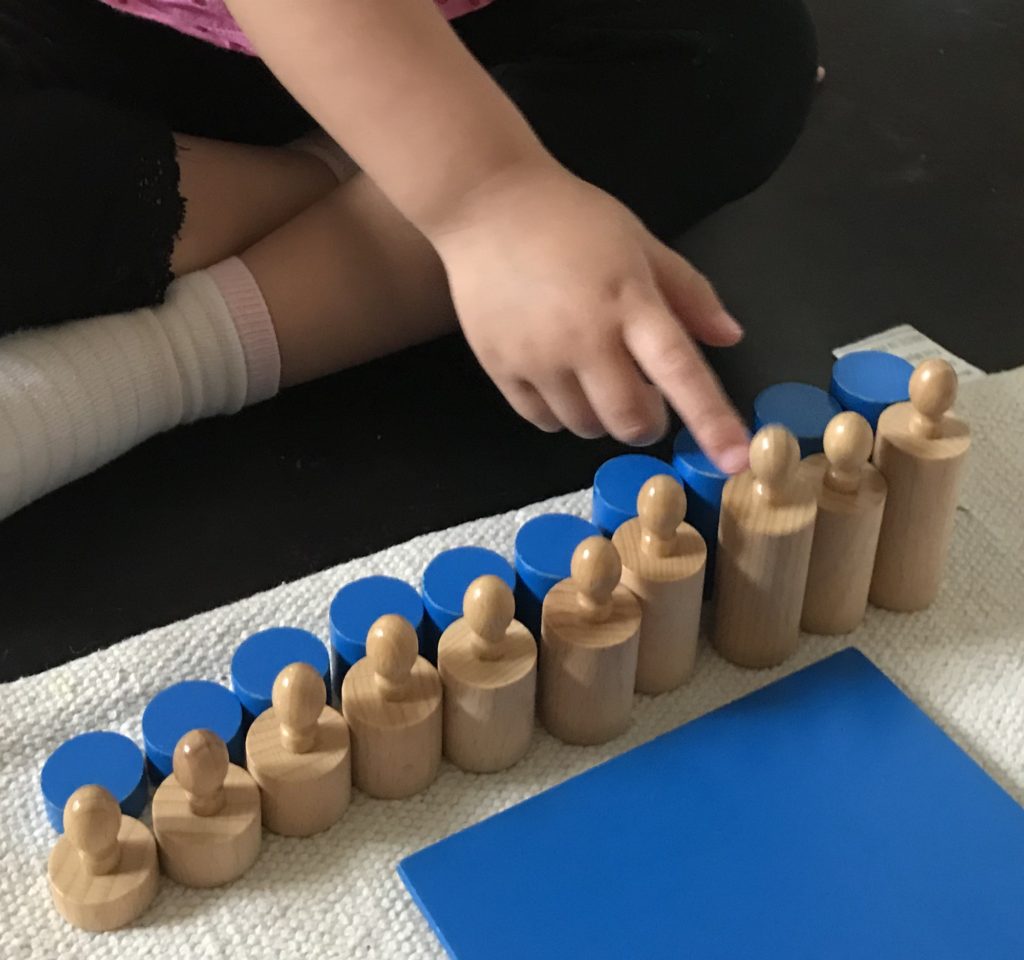
The quintessential Montessori sensorial materials in our classroom are the pink tower, the brown stairs and the knobbed and knobless cylinders (at left). Each of these include 10 graded objects. That is, they are materials to be placed in a certain order (usually “small-to-large” or “large-to-small”). To do so, the child must first use her eyesight to tell the difference, and then in manipulating the objects she gains a sense of its size and weight. Little-by-little, she is understanding the minute details of her environment with multiple senses.
These activities help children develop by encouraging their brain to differentiate between similar objects. Such visual discrimination will soon help children when they begin writing and reading (visualize the subtle difference between “r”, “n” and “h”). In addition, working with patterns develops the neural pathways to facilitate understanding quantities and other math processes.
